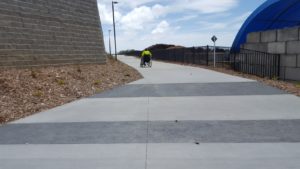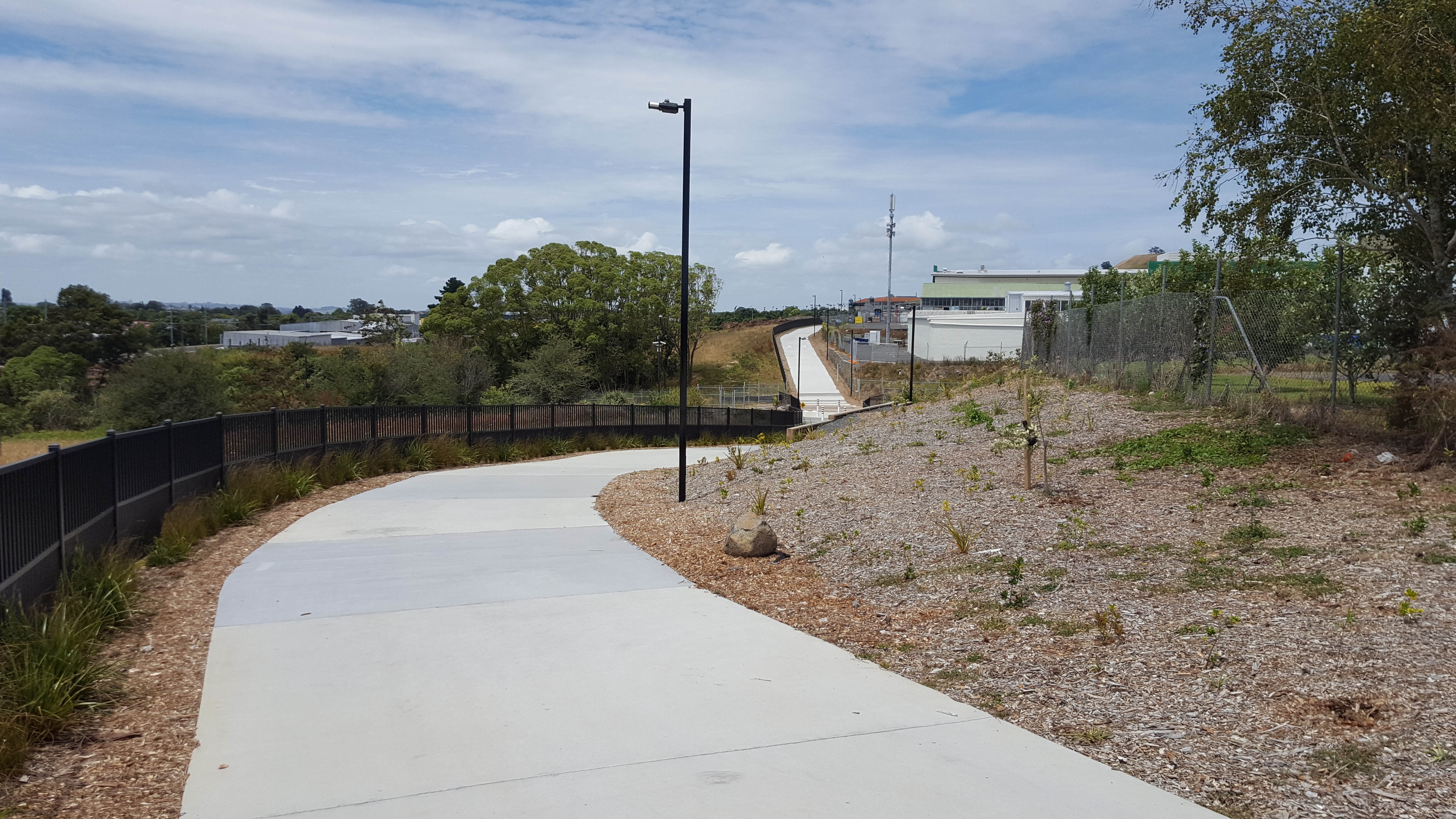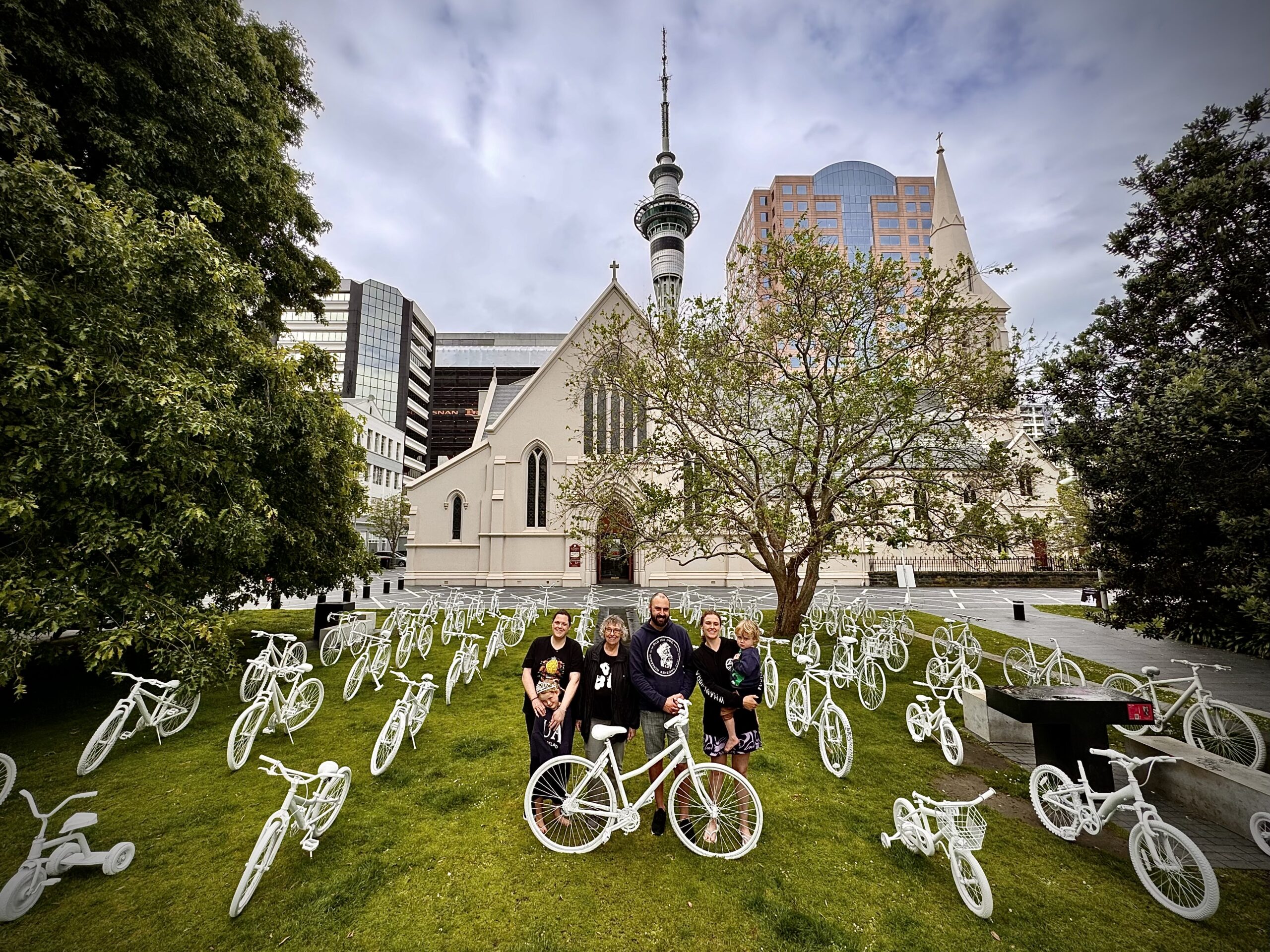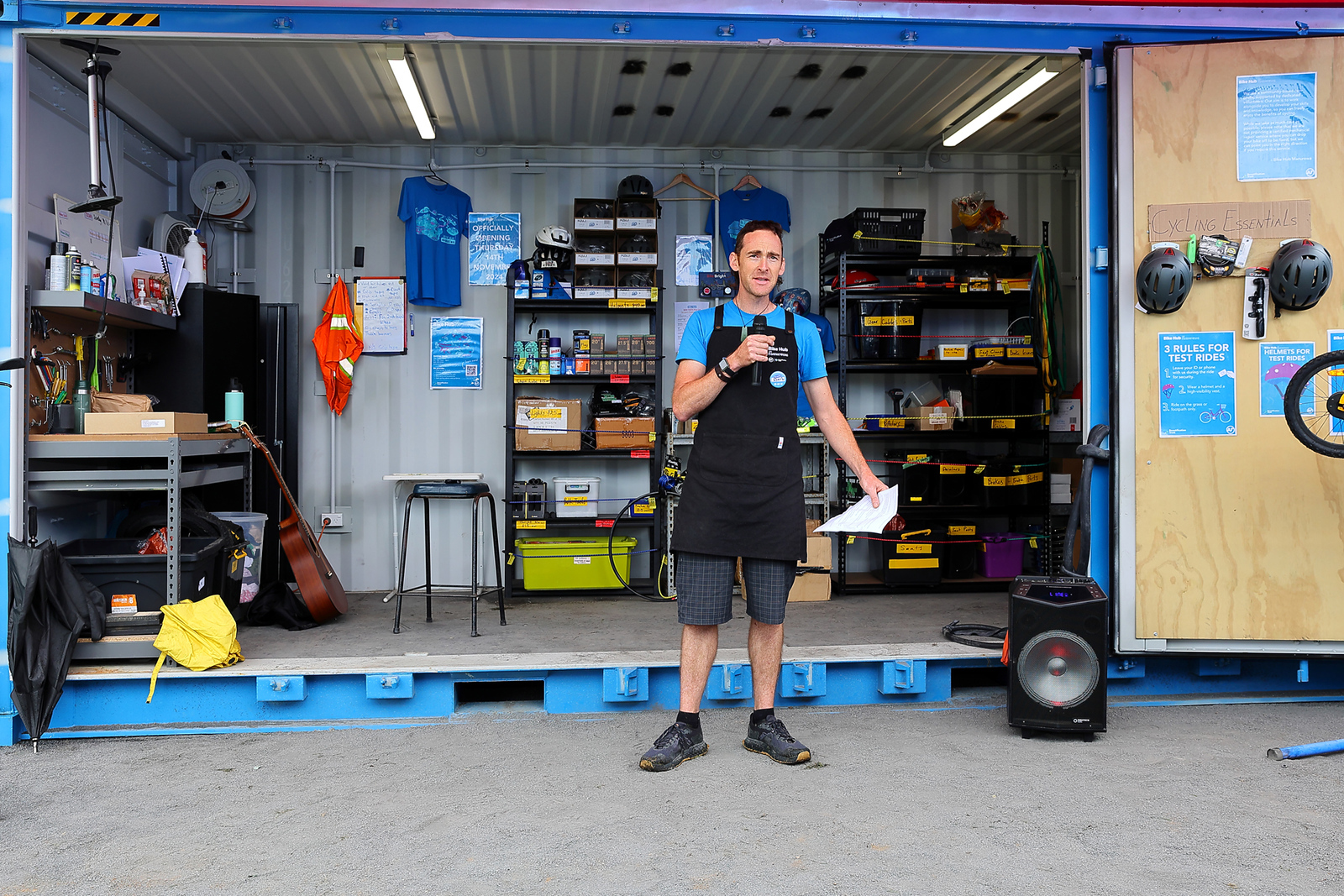Unlike its flashier city cousin Lightpath, the first stage of our ‘Eastern Path’ (Te Ara ki Uta ki Tai, from Glen Innes to Tamaki Drive) hasn’t been in the news much since it opened.
This isn’t unexpected – unlike Lightpath, this new section of cycleway isn’t at the busy city end of an established bike route into town. Expecting heaps of demand from the get-go would be a bit like building an isolated chunk of the Northwestern Cycleway out in Te Atatu first, and then wondering why a whole bunch of people weren’t rushing to ride it into the CBD. That deluge will come with the construction of Section 2 and 4 and the widening of Section 3. All sections are funded and should be finished by 2018, fingers crossed.
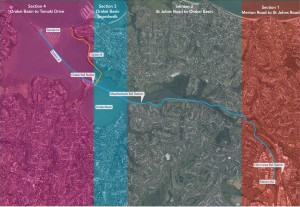
In the meantime, it’s great to have Section 1 up and running, as it gives us a chance to resolve a few worrying ‘wrinkles’ in the design – hopefully in time to make sure the same issues don’t occur in Section 2.
Yes, we’re talking about the regular ‘steps’ or platforms that many riders have remarked upon, on the sloping sections of the path.
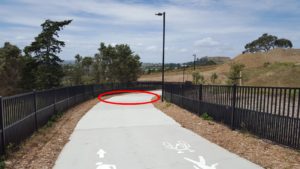
They’re not visually marked in any way, so you can’t see them – which is the first issue. And they run the full width of the path, so you can’t avoid them. The result is a series of annoying (and unexpected) bumps when you are travelling at any reasonable speed; particularly noticeable when you’re riding downhill. If you encounter one of these bumps on the curve, it’s even more jarring – and might even risk a crash.
The second issue is the frequency: every 10m or so, for approximately 2/3 of the current section. By the time you notice what’s happening, you’re getting bumped higher with each subsequent step. The effect is obviously magnified for those traveling downhill, but also creates an interruptive effect for those pedalling (or running) uphill.
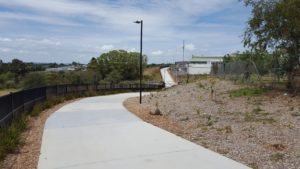
So why are these ‘steps’ there in the first place?
The section from St Johns Hill drops 43m across 800m, and is thus similar in steepness to the top section of Grafton Gully. For people with walking impairments, or in a wheelchair, regular platforms provide potentially much-needed rest spots on a path with a significant slope like this one. So NZTA tried to do the right (and necessary) thing, and made the path compliant with mobility standards.
Which is great, in principle.
But it appears the design, as constructed, may have the unintended consequence of discouraging bike traffic, especially commuter and sports riders. Slower riders who simply enjoy being able to ride away from scary car traffic will also find the bumps disconcerting, and may be less confident about coping with the unexpected effects. We’re also hearing it’s tough for runners traveling at any meaningful speed.
Note: the issue isn’t so problematic as to make the path completely unusable (it rides and runs okay, just not great) – but it does pose potential dangers (the invisibility factor is a biggie) and clearly needs fixing.
And of course, universal design is a sine-qua-non in a 21st century city: it’s crucial to provide access for less able users, including those who use wheelchairs. But, as a consultant engaged by NZTA has pointed out, the Austroads design guide and NZTA’s own Pedestrian Planning and Design Guidelines generally restrict the use of full-width ‘rest areas’ to access ramps, road crossings etc – i.e. short lengths where the predominant usage is for access. For longer distance paths designed for commuting and recreation, a better approach would likely involve a separate path, or regular landing areas set off to the side of the main path.
So, can this be fixed?
The good news is, now that we’ve raised the issue – thanks to the many riders and runners who contacted us about this! – NZTA and AT have acknowledged the problem. They’re now working with us and the designers to explore solutions for remedial work on Stage 1, and to ensure that Stage 2 (the longer section on the western side of the ridge) doesn’t include the same design problems.
Possibilities for fixing Stage 1 range from the very simple (adding markings and signage) to re-designing the affected sections. Our preferred approach would be to split walking/ wheelchair use and cycling – we always maintain that both modes deserve their own travel space! But it’s still unclear whether that’s feasible without upsetting the whole approvals process, as it may require greater overall path width.
In any case, we will keep you posted. And again, a huge thank you to those who contacted us about this issue – your voices are absolutely being heard at the top table and making a difference to future designs.
